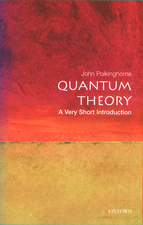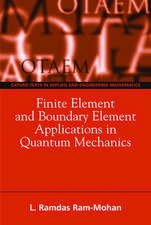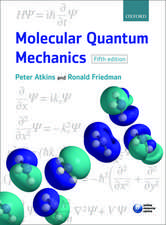Relativistic Theory of Atoms and Molecules: A Bibliography 1916–1985: Lecture Notes in Chemistry, cartea 41
Autor Pekka Pyykköen Limba Engleză Paperback – noi 1986
Din seria Lecture Notes in Chemistry
-
 Preț: 96.74 lei
Preț: 96.74 lei - 18%
 Preț: 1123.35 lei
Preț: 1123.35 lei - 18%
 Preț: 776.72 lei
Preț: 776.72 lei - 18%
 Preț: 779.57 lei
Preț: 779.57 lei - 18%
 Preț: 1005.74 lei
Preț: 1005.74 lei - 18%
 Preț: 997.88 lei
Preț: 997.88 lei - 18%
 Preț: 1004.00 lei
Preț: 1004.00 lei - 18%
 Preț: 1136.30 lei
Preț: 1136.30 lei - 18%
 Preț: 1117.03 lei
Preț: 1117.03 lei - 18%
 Preț: 1006.55 lei
Preț: 1006.55 lei - 18%
 Preț: 903.62 lei
Preț: 903.62 lei -
 Preț: 377.73 lei
Preț: 377.73 lei -
 Preț: 395.63 lei
Preț: 395.63 lei - 18%
 Preț: 728.43 lei
Preț: 728.43 lei - 18%
 Preț: 782.57 lei
Preț: 782.57 lei - 18%
 Preț: 1112.78 lei
Preț: 1112.78 lei - 15%
 Preț: 688.13 lei
Preț: 688.13 lei - 15%
 Preț: 646.62 lei
Preț: 646.62 lei -
 Preț: 393.35 lei
Preț: 393.35 lei - 18%
 Preț: 1124.30 lei
Preț: 1124.30 lei -
 Preț: 384.86 lei
Preț: 384.86 lei -
 Preț: 383.71 lei
Preț: 383.71 lei -
 Preț: 378.71 lei
Preț: 378.71 lei -
 Preț: 384.09 lei
Preț: 384.09 lei -
 Preț: 387.42 lei
Preț: 387.42 lei -
 Preț: 388.90 lei
Preț: 388.90 lei -
 Preț: 393.35 lei
Preț: 393.35 lei -
 Preț: 384.09 lei
Preț: 384.09 lei -
 Preț: 377.73 lei
Preț: 377.73 lei -
 Preț: 382.95 lei
Preț: 382.95 lei -
 Preț: 384.70 lei
Preț: 384.70 lei - 15%
 Preț: 644.63 lei
Preț: 644.63 lei -
 Preț: 386.00 lei
Preț: 386.00 lei -
 Preț: 389.70 lei
Preț: 389.70 lei -
 Preț: 384.09 lei
Preț: 384.09 lei -
 Preț: 385.25 lei
Preț: 385.25 lei -
 Preț: 392.21 lei
Preț: 392.21 lei -
 Preț: 386.00 lei
Preț: 386.00 lei -
 Preț: 403.37 lei
Preț: 403.37 lei -
 Preț: 378.71 lei
Preț: 378.71 lei -
 Preț: 383.50 lei
Preț: 383.50 lei -
 Preț: 390.63 lei
Preț: 390.63 lei -
 Preț: 389.31 lei
Preț: 389.31 lei
Preț: 648.42 lei
Preț vechi: 762.85 lei
-15% Nou
Puncte Express: 973
Preț estimativ în valută:
124.08€ • 129.81$ • 103.07£
124.08€ • 129.81$ • 103.07£
Carte tipărită la comandă
Livrare economică 03-17 aprilie
Preluare comenzi: 021 569.72.76
Specificații
ISBN-13: 9783540171676
ISBN-10: 3540171673
Pagini: 404
Ilustrații: IX, 389 p.
Dimensiuni: 170 x 244 x 21 mm
Greutate: 0.64 kg
Ediția:Softcover reprint of the original 1st ed. 1986
Editura: Springer Berlin, Heidelberg
Colecția Springer
Seria Lecture Notes in Chemistry
Locul publicării:Berlin, Heidelberg, Germany
ISBN-10: 3540171673
Pagini: 404
Ilustrații: IX, 389 p.
Dimensiuni: 170 x 244 x 21 mm
Greutate: 0.64 kg
Ediția:Softcover reprint of the original 1st ed. 1986
Editura: Springer Berlin, Heidelberg
Colecția Springer
Seria Lecture Notes in Chemistry
Locul publicării:Berlin, Heidelberg, Germany
Public țintă
ResearchCuprins
1. Introduction.- Table 1.1. Monographs and other general references.- 2. One-particle problems.- 2.1. Special relativity and the old quantum theory.- 2.2. On the Klein-Gordon equation.- 2.3. The Dirac equation.- 3. Quantum electrodynamical effects.- Table 3.1. Higher-order corrections: methods.- Table 3.2. Higher-order corrections: hyperfine interactions.- Table 3.3. Higher-order corrections: energy levels.- Table 3.4. Higher-order corrections: interatomic and -molecular interactions.- 4. Multielectron atoms: methods.- Table 4.1. General methods and basic theory for multielectron atoms.- Table 4.2. Published programs for atoms.- Table 4.3. Numerical, non-statistical four-component methods.- Table 4.4. Four-component LCAO approaches for many-electron atoms.- Table 4.5. Various four-component local-density methods.- Table 4.6. Thomas-Fermi calculations.- Table 4.7. Independent-particle models.- Table 4.8. Definitions, reviews and background for effective potential calculations.- Table 4.9. Effective-potential methods.- Table 4.10. Available relativistic effective potentials.- Table 4.11. One-component and perturbation calculations.- Table 4.12. (1/Z- and other similar expansions for many-electron atoms.- 5. Multielectron atoms: results.- Table 5.1. Tabulations of atomic ground-state properties.- Table 5.2. Data on atomic energy levels.- Table 5.3. Auger and autoionization processes.- Table 5.4. Ionization potentials and electron affinities.- Table 5.5. Supercritical (Z > 137) systems.- Table 5.6. Electromagnetic transition probabilities.- Table 5.7. Polarisabilities and screening constants.- Table 5.8. Electric and magnetic hyperfine properties.- Table 5.9. Average radii and magnetic g-factors.- Table 5.10. Compton profiles, momentum distributions and spin densities.- Table 5.11. X-ray scattering factors.- Table 5.12. Electron and positron scattering.- Table 5.13. Particle-atom collisions..- Table 5.14. Photon scattering and photoionization.- Table 5.15. Atom-atom collisions and interatomic potentials.- Table 5.16. Nuclear processes involving electronic wave functions.- Table 5.17. Parity-violation effects in atoms and molecules.- 6. Symmetry.- Table 6.1. Theory of double groups and related aspects.- Table 6.2. Available data for double groups.- Table 6.3. Time-reversal symmetry and related questions.- 7. Molecular calculations.- Table 7.1. One-electron systems.- Table 7.2. LCAO-DF calculations on molecules.- Table 7.3. Molecules treated by the DF-OCE method.- Table 7.4. Molecules treated by the DS-DVM method.- Table 7.5. Molecules treated by the DS-MS X? method.- Table 7.6. Molecules treated by the quasirelativistic DS-MS X? approach.- Table 7.7. Molecules treated by pseudopotential methods.- Table 7.8. Molecules treated by the Perturbative Hartree-Fock-Slater (P-HFS) method.- Table 7.9. First-order perturbation theory on molecules.- Table 7.10. Density functional calculations1.- Table 7.11. Semiempirical methods.- Table 7.12. Relativistic crystal field theory.- Table 7.13. Relativistic theories of molecular properties.- 8. Solid-state theory.- Table 8.1. Band-structure calculations..- 9. Relativistic effects and heavy-element chemistry.- Table 9.1. “Relativity and the periodic system”. Periodic trends, reviews and pedagogical papers.- Table 9.2. Bond lengths.- Table 9.3. Dissociation and interaction energies.- Table 9.4. Force constants.- Table 9.5. Molecular fine-structure splittings.- Table 9.6. Magnetic resonance parameters.- Table 9.7. Electric dipole moments and molecular charge distributions.- Table 9.8. Molecularenergy levels and energy transfer.- Table 9.9. Molecular ionization potentials and electron affinities.- Some comments on notations and terminology.- List of acronyms and symbols.










